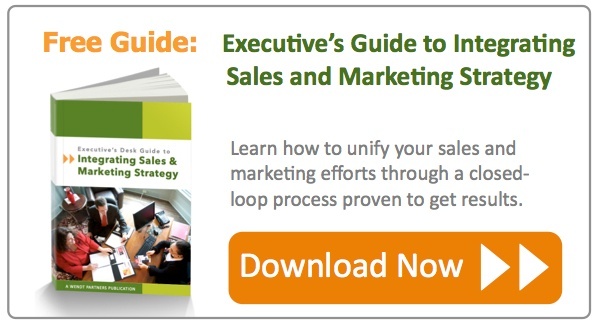Doug Wendt is a co-founder and senior partner with Wendt Partners.
Before joining Wendt Partners, I co-founded an education travel company offering university students, faculty, and young professionals full-immersion programs in rural Africa and South America. My experience working with this young company enabled me to gain insights into what it really takes to grow a business, focusing on marketing strategies and action plans that result in growth.
 While our company offered all the relevant content for customers to enjoy a truly transformative experience, we missed a valuable opportunity to link our marketing strategy to the content of the buyer's journey. This missing link could have created access to potential customers beyond our regular customer base. I began to ask myself some important questions, the first being: What essential marketing and sales functions need to be in place for our company to experience sales success and rapid growth?
While our company offered all the relevant content for customers to enjoy a truly transformative experience, we missed a valuable opportunity to link our marketing strategy to the content of the buyer's journey. This missing link could have created access to potential customers beyond our regular customer base. I began to ask myself some important questions, the first being: What essential marketing and sales functions need to be in place for our company to experience sales success and rapid growth?
I’ve spent a decent amount of time answering this question during my entrepreneurial journey. After researching many different options, I’ve become a firm believer in inbound marketing. Inbound marketing is an integrated customer-focused model for business development. One of the world leaders in inbound marketing is HubSpot, a Cambridge, Massachusetts company ranked the #1 marketing automation vendor in 2014.
By immersing myself in the inbound marketing methodology and working through HubSpot’s certifications, I’ve stumbled across a number of ideas that I wish I had known earlier:
Apply a Buyer Persona to Each Step of the Marketing Strategy
One of my main responsibilities was to design a methodology around user-centered, design-driven innovation. At the core of this process was viewing innovation through the lens of the user or customer. We used what inbound marketing experts, would call a buyer persona, “a semi-fictional representations of your ideal customer based on real data and some select educated speculation about customer demographics, behavior patterns, motivations and goals.”
While we used the buyer persona to develop marketing strategies, I now know that we could have gone further in using this persona to understand what our prospects needed at each step of the buyer’s journey. HubSpot highlights that “80% of business decision-makers prefer to get company information in a series of articles versus an advertisement.” This speaks to the importance of applying your buyer persona to each step of the buyer’s journey, particularly with a focus on value-added content.
Share Quality Content and Expertise with Potential Buyers
In developing our full-immersion programs, we created an extensive blended learning curriculum full of 100+ lectures, activities and workshops. We then adapted this content to engage participants through culturally appropriate credit-bearing platforms. This involved customizing the master curriculum into guidebooks, infographics, web courses, and mobile experiences suitable to meet our participant’s needs. We had plenty of quality content! We shared this content through an active blog with updates from participants and staff on our programs in 5 countries, which included contributions to outlets like the Huffington Post and a regular newsletter distributed to a dedicated list of change makers.
We were equipped with lots of quality content, yet only those who were a part of our community would ever know. We had strategies to attract visitors, but we missed the tactics and tools to guide visitors through the buyer’s journey to becoming customers. We didn't have the proper tools and procedures in place to effectively distribute our content. Most businesses fail to create consistent high quality content. But even those who do will fail to see the return on that effort if they do not have an effective distribution plan.
The Buyer’s Journey: Buyer Persona + Right Content + Right Distribution
This final onus of the buyer’s journey – effective distribution – fell directly on me. I was responsible for creating and publishing our program content. As with any small growth-driven team, I was also part of our marketing and sales efforts: 1/3 content creator, 1/3 marketer and 1/3 salesperson. In retrospect this combination made me a prime candidate to become an Inbound Evangelist.
In order to create access to prospective customers and guide buyers along their journey, we needed to answer key questions in the appropriate format along this path. This is essential from the awareness stage (e.g. eBooks), to the consideration stage (e.g. podcasts), to the decision stage (e.g. case studies), all the while engaging customers in a simple and delightful way.
HubSpot training taught me several things:
- Personas will help create the right content;
- The right distribution technique gets the right content in front of the right person at the right time;
- The right content and right distribution is the most effective approach to guide customers along their buyer’s journey.
Growing a company often feels like putting the right pieces of the puzzle in place. Looking back, I had many of the right marketing and sales pieces to the growth puzzle but lacked the growth strategy, proper implementation tools, and performance indicators that would increase capacity and optimize growth.
Thankfully, many pieces make up a puzzle. Many of our other organizational pieces were in the right place: our team, including the communities we engaged in the US, Africa and Latin America; and a strong guiding mission to prove that experiential education programs can “catalyze social innovation and entrepreneurship across the globe.”
At Wendt Partners, my entire focus is on leveraging my previous business experience by putting the right elements of sales, marketing, strategy and leadership to work for CEOs and executives seeking to grow successful businesses. Here’s to putting the right pieces of the puzzle in place!







